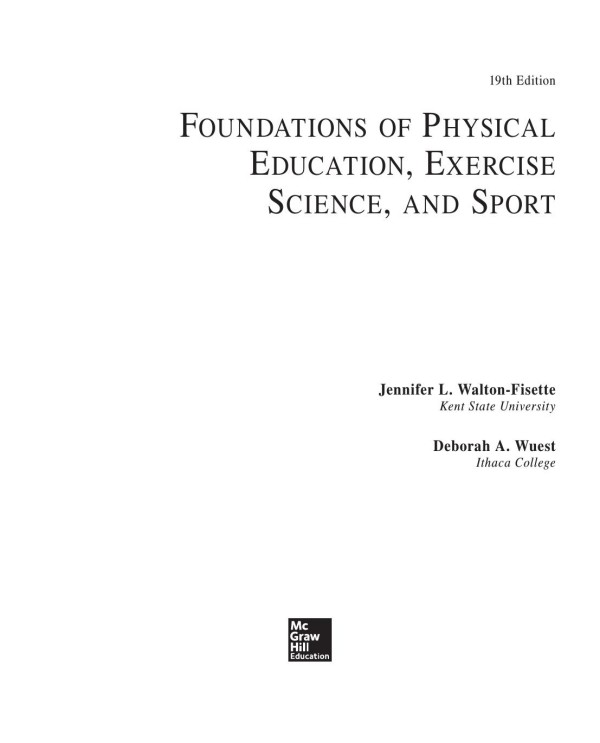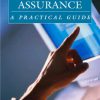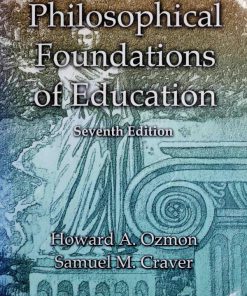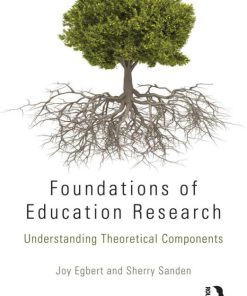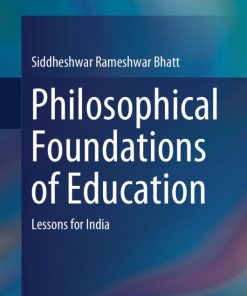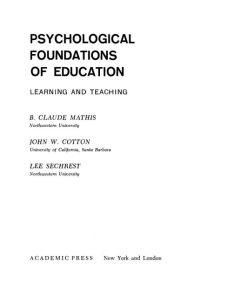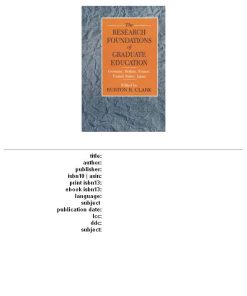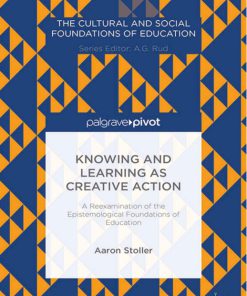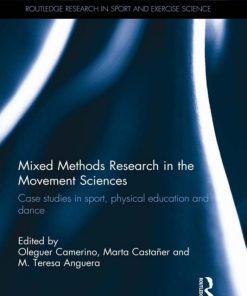(Ebook PDF) Foundations of Physical Education, Exercise Science and Sport 19th edition by Deborah Wuest 1265301794 9781265301798 full chapters
$50.00 Original price was: $50.00.$25.00Current price is: $25.00.
Authors:Jennifer L. Walton-Fisette Deborah A. Wuest , Series:Education [232] , Author sort:Wuest, Jennifer L. Walton-Fisette Deborah A. , Languages:Languages:eng , Published:Published:May 2017 , Publisher:McGraw Hill
Foundations of Physical Education, Exercise Science & Sport 19th edition by Deborah Wuest – Ebook PDF Instant Download/DeliveryISBN: 1265301794, 9781265301798
Full download Foundations of Physical Education, Exercise Science & Sport 19th edition after payment.

Product details:
ISBN-10 : 1265301794
ISBN-13 : 9781265301798
Author : Deborah Wuest
Foundations of Physical Education, Exercise Science, and Sport
Foundations of Physical Education, Exercise Science & Sport 19th Table of contents:
Chapter 1: Meaning and Scope
Part I: Nature and Scope of Physical Education, Exercise Science, and Sport
Introduction
Contemporary Physical Education, Exercise Science, and Sport Programs
Physical Education, Exercise Science, and Sport Defined
Physical Education, Exercise Science, and Sport
Allied Fields
Health
Recreation and Leisure
Dance
Growing as a Professional in Physical Education, Exercise Science, and Sport
Reading Research
Staying Up-to-Date with Technology
Summary
Discussion Questions
Self-Assessment Activities
References
Chapter 2: Philosophy, Goals, and Objectives
Introduction
Philosophy
What Is Philosophy?
Branches of Philosophy
Major Philosophies
Modern Educational Philosophy
The Mind-Body Relationship
Philosophy of Sport and Physical Activity
Your Professional Philosophy
Goals and Objectives Defined
Goals of Physical Education, Exercise Science, and Sport
Learning Domains
Taxonomies
Cognitive Domain
Affective/Social Domain
Psychomotor Domain
Assessment of Learning
Assessment Defined
Purposes of Assessment
Summary
Discussion Questions
Self-Assessment Activities
References
Chapter 3: Health and Physical Activity in Our Society
Introduction
Changing Demographics
Cultural Humility and Social Justice
Wellness Movement
Wellness and Health
Epidemiologic Shift
Chronic Disease in the United States
Health Goals of the Nation
Implications of the Wellness Movement
Fitness and Physical Activity Movement
Fitness and Physical Activity of Children and Youth
Fitness and Physical Activity of Adults
Implications of the Fitness and Physical Activity Movement
Summary
Discussion Questions
Self-Assessment Activities
References
Chapter 4: Historical Foundations
Part II: Foundations of Physical Education, Exercise Science, and Sport
Introduction
Sport History
Definition and Scope
Historical Development
Areas of Study
Ancient Greece and Rome
Early Modern European Programs
Germany
Sweden
Denmark
Great Britain
Physical Education and Sport in the United States
Colonial Period (1607–1783)
National Period (1784–1861)
Civil War Period through 1900
Early Twentieth Century
World War I (1916–1919)
Golden Twenties (1920–1929)
Depression Years (1930–1939)
Mid-Twentieth Century (1940–1970)
Significant Recent Developments (1970–Present)
The Discipline
Disease Prevention and Health Promotion
School Physical Education
Physical Fitness and Participation in Physical Activity
The Growth of Sports
Girls and Women in Sports
Programs for Individuals with Disabilities
Olympics
Summary
Discussion Questions
Self-Assessment Activities
References
Chapter 5: Motor Behavior
Introduction
Motor Behavior
Motor Learning and Motor Control
Definition and Scope
Areas of Study
Motor Learning Models
Performance Characteristics and Skill Learning
Stages of Learning
Factors Influencing Learning
Motor Learning Concepts
Motor Development
Definition and Scope
Areas of Study
Phases of Motor Development
Selected Fundamental Motor Skills
Development of Fundamental Motor Skills
Summary
Discussion Questions
Self-Assessment Activities
References
Chapter 6: Biomechanical Foundations
Introduction
Kinesiology and Biomechanics
Definition and Scope
Growth of Biomechanics
Reasons for Studying Biomechanics
Major Areas of Study
Selected Biomechanical Terms Related to Human Motion
Mechanical Principles and Concepts Related to Movement
Stability
Motion
Leverage
Force
Biomechanical Analysis
Instruments and Techniques
Analysis
The Future
Summary
Discussion Questions
Self-Assessment Activities
References
Chapter 7: Exercise Physiology and Fitness
Introduction
Exercise Physiology: An Overview
Definition
Areas of Study
Physical Fitness
Physical Activity, Physical Fitness, and Health
Fitness Development
Energy Production for Physical Activity
Principles of Fitness Training
FITT Formula
Health Fitness Components
Cardiorespiratory Endurance
Body Composition
Muscular Strength and Endurance
Flexibility
Designing an Exercise Program
Special Considerations for Fitness
Environmental Conditions and Fitness
Nutrition and Fitness
Performance-Enhancing Drugs
Summary
Discussion Questions
Self-Assessment Activities
References
Chapter 8: Sociological Foundations
Introduction
Sociology of Sport
Definition and Scope
Areas of Study
Sport: A Definition
Sport and Organized Sport Activities
Conditions
Participation Motives
Sport in Educational Institutions
Interscholastic Sport
Intercollegiate Sport
Girls and Women in Sport
Racial Minorities in Sport
Sport for Children and Youth
Violence in sport
Performance-Enhancing Substances in Sport
Summary
Discussion Questions
Self-Assessment Activities
References
Chapter 9: Sport and Physical Activity Psychology
Introduction
Sport And Physical Activity Psychology
Definition and Scope
Areas of Study
Psychological Benefits of Physical Activity
Motivation
Exercise Adherence
Understanding Behavior Change
Promoting Adherence
Personality
Nature of Personality
Personality and Sport
Anxiety and Arousal
Nature of Anxiety and Arousal
Why Does Arousal Influence Performance?
Anxiety, Arousal, and Performance
Goal Setting
Types of Goals
How Goal Setting Works
Principles of Effective Goal Setting
Enhancing Performance through Self-Talk
Nature of Self-Talk
Types of Self-Talk
Application of Self-Talk
Modifying Self-Talk
Mental Imagery To Enhance Performance
Nature of Imagery
Uses of Imagery
Intervention Strategies
Mental Health of Athletes
Removing Barriers, Facilitating Mental Well-being
Supporting Athlete Mental Health
Your Role as a Professional
Summary
Discussion Questions
Self-Assessment Activities
References
Chapter 10: Physical Education Pedagogy
Introduction
Physical Education Pedagogy: An Overview
Definition and Scope
Areas of Study
Standards-Based Education
Curriculum Development
Pedagogical Models
Skill Themes
Personal and Social Responsibility
Teaching Games for Understanding/Tactical Games Model
Sport Education
Fitness Education
Adventure-Based Learning
Outdoor Education
Activist Approaches
Pedagogies of Affect
Assessment and Accountability
Types of Assessment
Characteristics of Effective Teaching
Addressing social justice issues in Physical Education
(Dis)ability
Gender
Body Issues
Race
Social Class
Sexuality
Summary
Discussion Questions
Self-Assessment Activities
References
Chapter 11: Career and Professional Development
Part III: Careers and Professional Considerations
Introduction
Careers in Physical Education, Exercise Science, and Sport
Choosing a Career
Maximizing Professional Preparation
Attaining a Professional Position
Professionalism
Leadership
Advocacy
Accountability
Cultural Humility
Ethics
Role Modeling
Involvement and Continued Professional Development
Service
Professional Organizations in Physical Education, Exercise Science, and Sport
Why Belong to a Professional Organization?
Professional Organizations
Occupational Socialization and Self-Care
Summary
Discussion Questions
Self-Assessment Activities
References
Chapter 12: Teaching and Coaching Careers
Introduction
Teaching and Coaching in Today’s World
The Teaching Profession
Why Teach?
Rewards, Benefits, and Challenges of Teaching
Competencies for Teachers
Physical Education and Physical Activity Initiatives
Quality Physical Education
Connecting School and Community for the Well-Being of Students
Teaching Responsibilities
Teaching Careers
Teaching in the School Setting
Teaching in Nonschool Settings
Teaching Certification
Coaching Careers
Why Coach?
Rewards, Benefits, and Challenges of Coaching
Teaching and Coaching
Coaching Responsibilities
Securing a Coaching Position
Coaching Education and Certification
Burnout and Self-Care
Increasing Your Professional Marketability
Summary
Discussion Questions
Self-Assessment Activities
References
Chapter 13: Fitness- and Health-Related Careers
Introduction
Fitness- and Exercise-Related Careers
Workplace Wellness Programs
Commercial and Community Fitness Programs
Personal Trainers
Health and Wellness Coaches
Strength and Conditioning Professionals
Rehabilitation Programs
Career Preparation
Health-Related Careers
Athletic Training
Wellness, Health Clubs, and Spas
Therapy-Related Careers
Dance/Movement Therapy
Therapeutic Recreation/Recreation Therapy
Physical Therapy
Chiropractic Care
Increasing Your Professional Marketability
Summary
Discussion Questions
Self-Assessment Activities
References
Chapter 14: Sport Management, Media, and Sport-Related Careers
Introduction
Sport Management
Careers in Sport Management
Athletic Administration
Collegiate Recreation and Wellness
Workplace Recreation
Sport Facilities Management
Sport Retailing
Sport Marketing
Career Opportunities in Professional and Sport Organizations
Sport Analytics
Careers in Sport Media
Sport Broadcasting
Sportwriting and Journalism
Sport Photography
Sports Information
Web Development and Social Media
Performance and Other Sport Careers
Dance
Professional Athletics
Officiating
Sport Law and Agency
Entrepreneurship
Increasing Your Professional Marketability
Summary
Discussion Questions
Self-Assessment Activities
References
Chapter 15: Future Professionals as Leaders and Advocates
Part IV: Future Professionals as Leaders and Advocates
Introduction
Leadership in Physical Activity
Leadership in Physical Education and Youth Sport
Advocacy
Current and future trends
Summary
Discussion Questions
Self-Assessment Activities
People also search for Foundations of Physical Education, Exercise Science & Sport 19th:
philosophical foundations of physical education
historical foundations of physical education
sociological foundations of physical education
history principles and foundations of physical education
biological foundations of physical education

